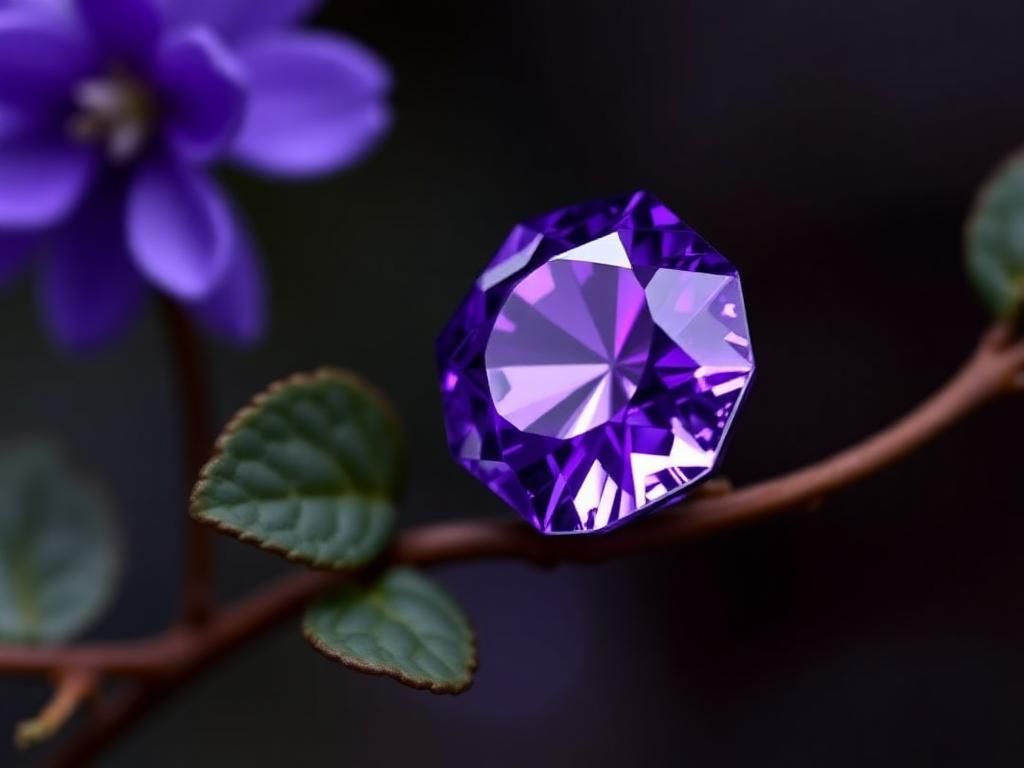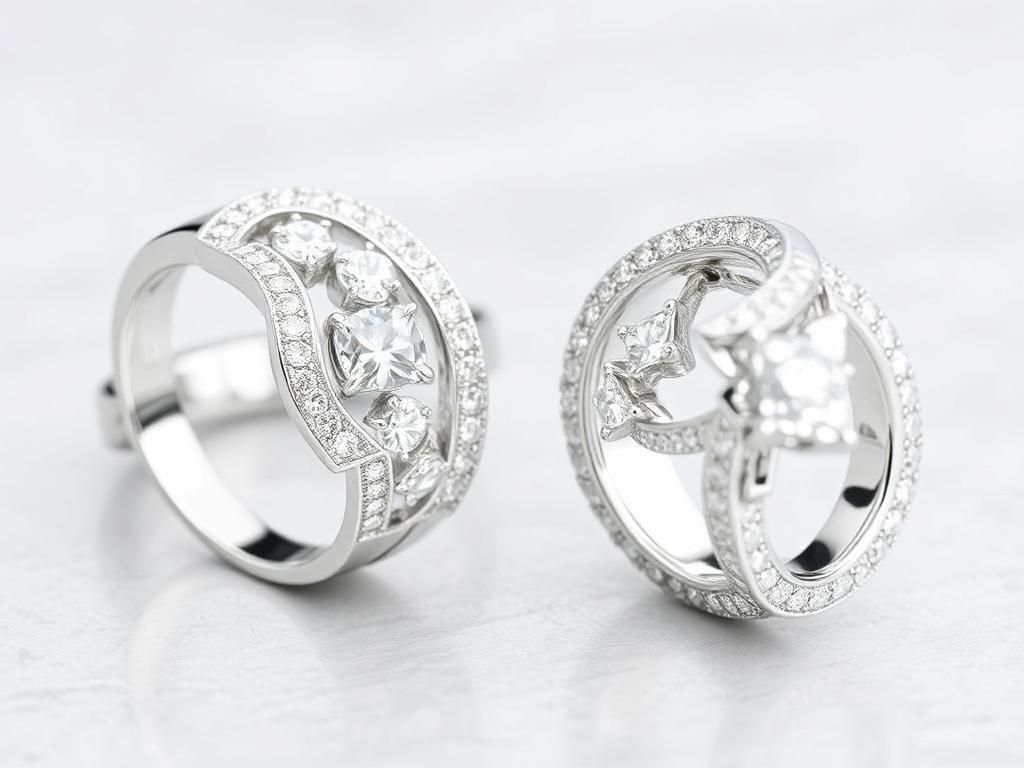Violet gems, with their rich hues and captivating beauty, have fascinated gem enthusiasts and collectors for centuries. These gemstones, characterized by their stunning violet shades, hold significance not only in gemology but also in various cultures around the world. From the deep royal purples of amethyst to the vibrant blues of iolite, the world of violet gems is diverse and alluring.
### Types of Violet Gems
#### Amethyst
Amethyst is perhaps the most renowned of the violet gems. Its unique features make it highly sought after:
– Features and Characteristics: Amethyst ranges in color from light lavender to deep purple, with clarity that can vary from translucent to transparent. Common cuts include round, oval, and pear shapes, and these gems are often found in sizes that suit both casual and high-end jewelry.
– Historical Significance and Symbolism: Traditionally, amethyst has been associated with royalty, often used in crowns and scepters. It symbolizes calmness and clarity of mind, embodying spiritual wisdom and protection.
– Sources and Locations: Major producers of amethyst include Brazil and Uruguay, where it is harvested from volcanic rock formations.
#### Iolite
Iolite, often referred to as the “courage stone,” is another fascinating violet gem:
– Features and Characteristics: One of the unique properties of iolite is its color-changing ability; it can appear blue, violet, or gray depending on the angle of light. This property makes it a striking choice for jewelry, offering versatility and beauty.
– Historical Significance and Symbolism: Historically, iolite was used by Viking navigators as a compass due to its pleochroic nature, helping them determine direction on cloudy days.
– Sources and Locations: Notable deposits of iolite can be found in India, Brazil, and Madagascar, each contributing varying shades and qualities.
#### Tanzanite
Tanzanite is a relatively recent addition to the world of violet gems, having gained fame in the late 20th century:
– Features and Characteristics: Originating from Tanzania, tanzanite displays unique color variations, often shifting from violet to blue depending on the light. It is softer than sapphire, making it a delicate yet beautiful gemstone.
– Historical Significance and Symbolism: Discovered in the 1960s, tanzanite quickly became popular for its mesmerizing color, often dubbed the gemstone of the 20th century.
– Sources and Locations: Tanzanite is exclusively found in Tanzania, creating a sense of rarity and exclusivity in the gemstone market.
#### Spinel
Often overshadowed by its more famous counterparts, spinel offers vibrant violet variations:
– Features and Characteristics: Spinel is remarkably durable, ranking high on the Mohs scale of hardness. Violet spinel is cherished for its rich colors and brilliance, often found in various jewelry pieces.
– Historical Significance and Symbolism: Throughout history, spinel has been misidentified as ruby and sapphire in various royal jewelry collections, demonstrating its historical significance.
– Sources and Locations: Notable locations for sourcing spinel include Myanmar, Sri Lanka, and Tanzania.
#### Purple Sapphire
Purple sapphires are rare and enchanting, distinguished from their blue relatives:
– Features and Characteristics: These sapphires exhibit a rich violet hue, and while many undergo treatments to enhance their color, their natural variations are highly valued in the market.
– Historical Significance and Symbolism: Purple sapphires have adorned royal jewelry, symbolizing wisdom and nobility throughout the ages.
– Sources and Locations: Prominent sources of purple sapphires include Sri Lanka and Madagascar, each offering unique coloration and clarity.
### The Formation of Violet Gems
#### Geological Processes
The formation of violet gems involves fascinating geological processes:
– Explanation of How Violet Gems are Formed: Most violet gems originate from volcanic and metamorphic rock formations, where high temperatures and pressures facilitate the crystallization of minerals.
– The Role of Trace Elements: Elements such as iron, titanium, and manganese contribute to the unique violet hues these gemstones exhibit. For example, iron can produce shades of violet in amethyst while titanium can influence the tint of tanzanite.
#### Mining Techniques
Understanding how violet gems reach the market also involves an overview of mining techniques:
– Overview of Mining Processes: The mining processes for these gems typically include both artisan and large-scale operations. Miners often sift through volcanic ash and sediment to locate these precious stones.
– Ethical Considerations in Gem Mining: As awareness grows regarding the ethical implications of gem mining, many consumers now seek responsibly sourced stones to support better practices in the industry.
### Uses of Violet Gems
#### Jewelry and Ornamentation
Violet gems hold a special place in contemporary jewelry designs:
– Popularity in Rings, Necklaces, and Earrings: Their stunning colors make them choice pieces in a range of jewelry from engagement rings to statement necklaces.
– Trends in Modern Jewelry Design: Today, jewelers are increasingly incorporating violet gems into unique, bespoke designs, appealing to those who desire individuality in their accessory choices.
#### Metaphysical and Healing Properties
Beyond their aesthetic appeal, violet gems are believed to possess various metaphysical properties:
– Beliefs Associated with Violet Gems: Many cultures associate these stones with emotional healing, spiritual enlightenment, and mental clarity.
– Uses in Holistic Practices: In holistic practices, violet gems are often used during meditation to enhance focus and peace.
### Caring for Violet Gems
#### Cleaning and Maintenance
To maintain the beauty of violet gems, proper care is essential:
– Recommended Methods for Cleaning Violet Gems: Gentle cleaning with warm soapy water and a soft cloth is often recommended; ultrasonic cleaners can damage more sensitive stones like tanzanite.
– Common Mistakes to Avoid: Avoid exposing gems to harsh chemicals or extreme temperatures, as these can lead to dulling or irreversible damage.
#### Storage
To preserve the quality and appearance of violet gemstones:
– Best Practices for Storing Violet Gemstones: Store gems separately in soft pouches or lined boxes to avoid scratches from contact with other stones.
– Importance of Temperature and Humidity Control: Maintaining a stable environment is crucial; avoid exposing gems to high humidity or direct sunlight to prevent fading or deterioration.
### Buying Violet Gems
#### Factors to Consider
When purchasing violet gems, various factors influence quality and value:
– Understanding the 4 Cs: Familiarity with Color, Clarity, Cut, and Carat weight is essential. For instance, the deeper the color, often the higher the value, especially for gemstones like amethyst and tanzanite.
– Importance of Certifications: Look for certifications from recognized institutions such as GIA or AIGS to ensure authenticity and reliable grading.
#### Market Trends
The market for violet gems is shaped by evolving trends and consumer interest:
– Current Market Demand for Violet Gems: Violet gems have seen a surge in popularity, attracting not just collectors but also fashion-forward individuals.
– Price Variations Based on Rarity and Qualities: Expect variations in prices due to rarity, particularly among high-quality specimens of tanzanite and purple sapphire.
### Table Summary of Violet Gems
| Gem Type | Color Range | Major Sources | Symbolism |
|---|---|---|---|
| Amethyst | Light Lavender to Deep Purple | Brazil, Uruguay | Royalty, Spiritual Wisdom |
| Iolite | Blue to Violet | India, Brazil, Madagascar | Courage, Navigation |
| Tanzanite | Violet to Blue | Tanzania | Rarity, Discovery |
| Spinel | Various including Violet | Myanmar, Sri Lanka | Durability, Historical Significance |
| Purple Sapphire | Rich Violet | Sri Lanka, Madagascar | Wisdom, Nobility |
### FAQ Section
#### What are violet gems?
Violet gems are gemstones that exhibit a hue ranging from light lavender to deep purple, including varieties like amethyst and tanzanite.
#### Are violet gems valuable?
Yes, the value of violet gems can vary significantly based on their quality, rarity, and market demand.
#### How do I care for my violet gemstones?
To care for violet gems, clean them with mild soap and water and store them separately to avoid scratches.
#### What is the significance of amethyst?
Amethyst is associated with peace, tranquility, and protection, historically linked to royalty and spirituality.
#### Can I wear violet gems every day?
Most violet gems are durable enough for daily wear, but soft stones like tanzanite should be worn with care.
#### Where can I buy violet gems?
You can find violet gems at jewelry stores, licensed gem dealers, and reputable online retailers like [GemTalk](https://www.gemsociety.org).
#### Do violet gems have healing properties?
Many believe that violet gems, like amethyst, offer emotional healing and spiritual insight.
#### What are the most popular violet gems?
The most popular violet gems include amethyst, tanzanite, and iolite due to their unique colors and symbolic meanings.
#### How can I tell if a violet gem is genuine?
Always look for certifications from established gemological institutes to ensure authenticity.
#### What are the main factors to consider when buying a violet gem?
Consider the 4 Cs: Color, Clarity, Cut, and Carat weight, as well as certification and sourcing for ethical considerations.
### References and Further Reading
For more insights and in-depth information on violet gems, you can explore authoritative sites such as:
1. [International Gem Society](https://www.gemsociety.org)
2. [Gemological Institute of America](https://www.gia.edu)


